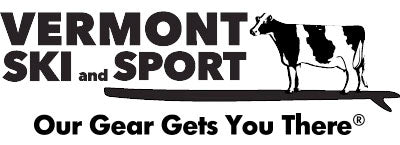EMAIL US

12 Things to Consider When Buying Your Race Stand Up Paddle Board
As I paddle the East Coast and the Caribbean I get to experience many types of water conditions. I've paddled in lakes, bays, seas, harbors, ocean and rivers all creating training situations and challenges that are very different. In the design of boats, it is a known fact that the wider the craft the more stable it is.

Recently after testing and training in ST Barthes (2019) I was influenced to share the following take aways from my experience. Selecting your board for the conditions that you will paddle in 85% of the time is what the team at Vermont Ski and Sport recommends. This will ensure you have the correct SUP to handle the majority of conditions. This will make you happier, more efficient, and more comfortable.
Inland waters such as lakes, ponds, and non-white water rivers have much less currents and textures than sea and ocean conditions typically, allowing you to ride a narrower board.

Example; I am very comfortable riding a 14’ x 21.5” NSP Carolina in my home region in of Vermont. But in the Caribbean with the rough seas, it was more difficult for me at my skill level. I will be getting a 24.5” wide board for my open water this season.
Along with understanding what water conditions you'll paddle the most, there's 12 other things to consider when buying your race or performance stand up paddle board.
1.) When in doubt always go wider. A paddle board that's too narrow will fry your Central Nervous System and tire your muscles faster while trying to balance and not fall in.
2.) Consider your true skill level in all aspects of water conditions before choosing the size you will buy.
3.) If you are a paddler that wants to be comfortable and stable no matter what condition, go wider.
4.) Your height and weight are important factors when deciding paddle board length, width, and volume. We specialize in finding you the correct board size.
5.) Bow rocker has a profound effect in the handling of rougher waters. Less rocker makes rough water more challenging, too much rocker decreases flat water speed and performance.
6.) If you can afford to own 2 boards of opposing sizes this is a scenario that can be awesome.
7.) Following seas, quartering seas, head seas, and winds in all directions take practice to paddle comfortably.

8.) A faster carbon performance board will not instantly make you a better paddler if you do not have a fundamentally strong athletic stance.
9.) Not all boards of the same width and length have equal volume. Check the numbers between brands.
10.) If you’re athletically capable and willing to work through the steeper learning curve and rougher water challenges of a narrower board, go for it.
11.) It's far easier to paddle a 21.5” wide paddle board in flat glassy conditions than in choppy conditions.
12.) In some situations, smaller athletic paddlers may benefit from choosing a narrower, lower volume board.

A paddle boarder can be faster and more efficient if they can balance and be comfortable the majority of the time. With that said choosing a board width that will ensure immediate and long term enjoyment and skill development should be the focus. Just because some of the top pros use a 21.5" doesn’t mean you need to also!

Leave a comment